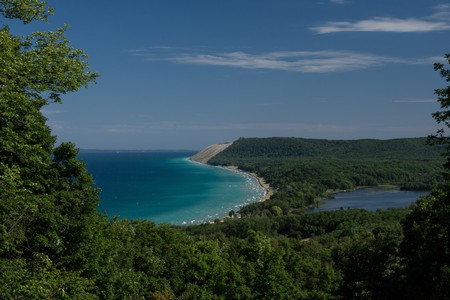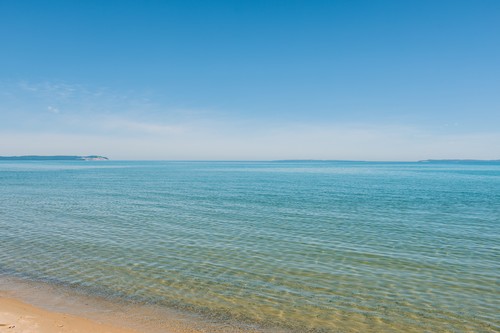Sleeping Bear Dunes: How Nature and History Shaped Northern Michigan’s Iconic Landmark
Sleeping Bear Dunes: How Nature and History Shaped Northern Michigan’s Iconic Landmark
Nestled in the heart of northern Michigan, the Sleeping Bear Dunes offer a captivating blend of natural beauty and rich history that beckons explorers and nature lovers alike. These impressive dunes, shaped by ancient glaciers and gentle winds, have always captivated visitors with their stunning views and intriguing old stories. Over 1.5 million visitors wander through this national treasure, they discover not only its geological wonders but also its cultural tapestry.
 Ice Age Formation
Ice Age Formation
The story of the Sleeping Bear Dunes begins during the last Ice Age, around 12,000 years ago. The glaciers that once smothered northern Michigan began to recede, leaving behind a transformed landscape. Massive ice sheets carved out the Great Lakes, and as they melted, they deposited layers of sand and sediment. Over time, winds and water sculpted these deposits into the impressive dunes we see today.
Geologists explain this process in terms of glacial dynamics. As glaciers advanced, they ground up rock into fine particles. When they retreated, these particles were carried by meltwaters, settling into vast beds of sand. The wind played its part, too, shaping these sands into towering dunes.
Today, visitors to the Sleeping Bear Dunes can witness these geological marvels firsthand. The dunes' ever-shifting sands are a living testament to the power of nature's forces, offering both a breathtaking view and a natural classroom for those eager to learn about Earth's history.
Indigenous Legends and Stories
Long before the dunes were recognized as a national treasure, they held significant cultural meaning for Indigenous peoples. The legend of the Sleeping Bear tells of a mother bear and her cubs who swam across Lake Michigan to escape a fire. The mother reached the shore, where she still rests today as the Sleeping Bear, watching over the island cubs.
This story is just one of many that imbue the dunes with meaning. The cultural history of the area is rich with such tales, each one adding layers of understanding to the landscape. Indigenous tribes, such as the Ottawa and Chippewa, have long revered the region as sacred. Their stories, passed down through generations, offer insights into the natural world and the spiritual significance of these lands.
By exploring these legends, visitors can gain a richer appreciation of how the dunes are not just a natural wonder but also a cultural landmark, bridging the past and the present.
Conservation Milestones 
Key conservation milestones include the establishment of the Sleeping Bear Dunes National Lakeshore, to preserve the "outstanding natural features, including forests, beaches, dune formations, and ancient glacial phenomena...for the benefit, inspiration, education, recreation, and enjoyment of the public." Designated in 1970, the area's protection ensures that its unique landscapes and diverse ecosystems remain intact for future generations.
Efforts to preserve the dunes involve a mix of government action, community support, and active management strategies. Conservationists focus on maintaining the ecological balance by managing visitor impact and protecting native species.
Continued monitoring ensures that the dunes remain healthy and vibrant.
Collaborative efforts between local communities and conservation organizations help sustain preservation initiatives.
Public education programs highlight the importance of conservation and encourage responsible visitation.
By understanding the dunes' history and ongoing preservation efforts, visitors can appreciate the roles both nature and humans play in shaping and safeguarding this iconic northern Michigan landmark.
Comments
Commenting has been turned off.Recent Posts
-
August 21, 2025
-
August 9, 2025
-
July 1, 2025
-
June 3, 2025
-
May 2, 2025
-
April 9, 2025
-
March 6, 2025
-
February 11, 2025
-
January 10, 2025
-
December 12, 2024